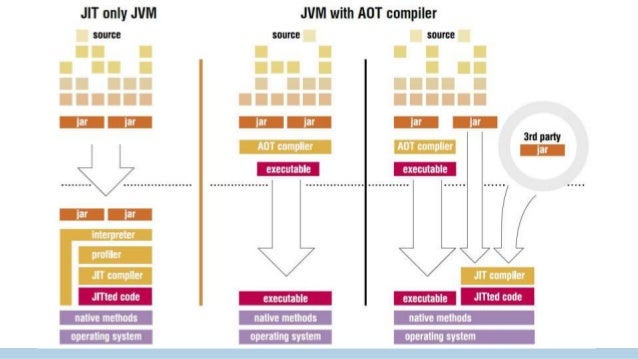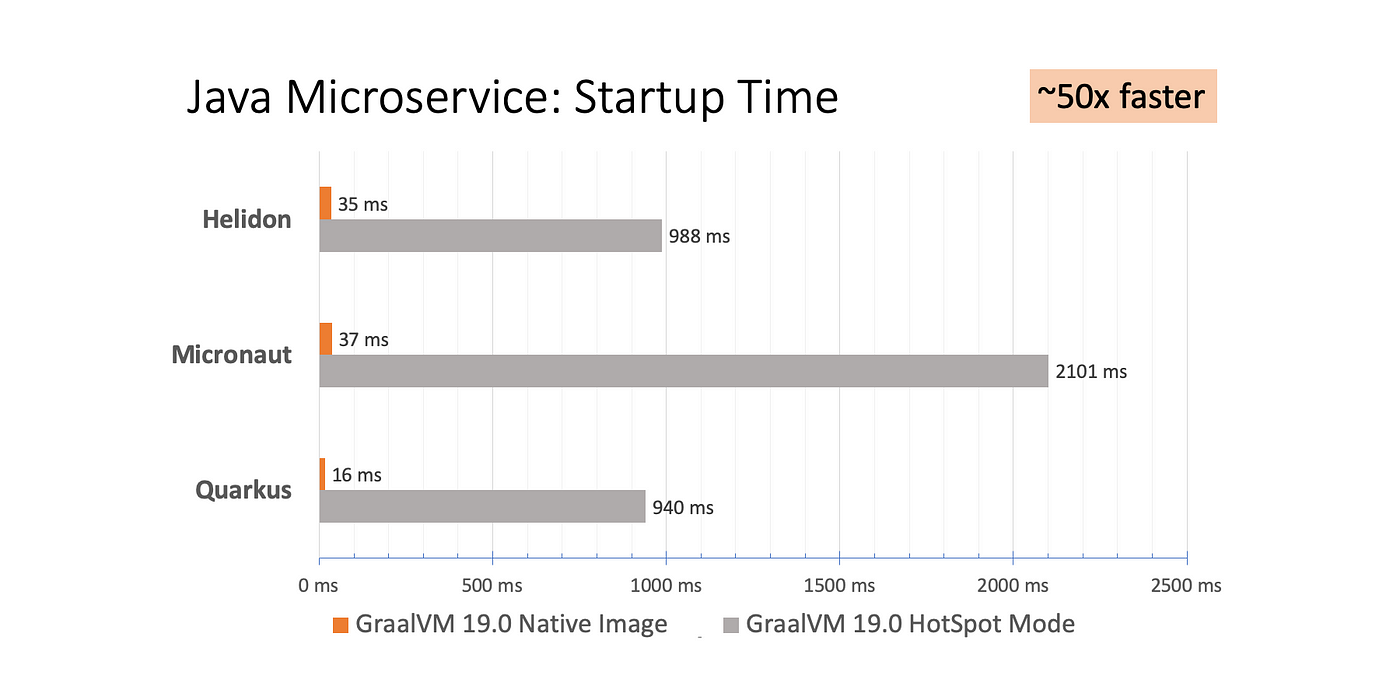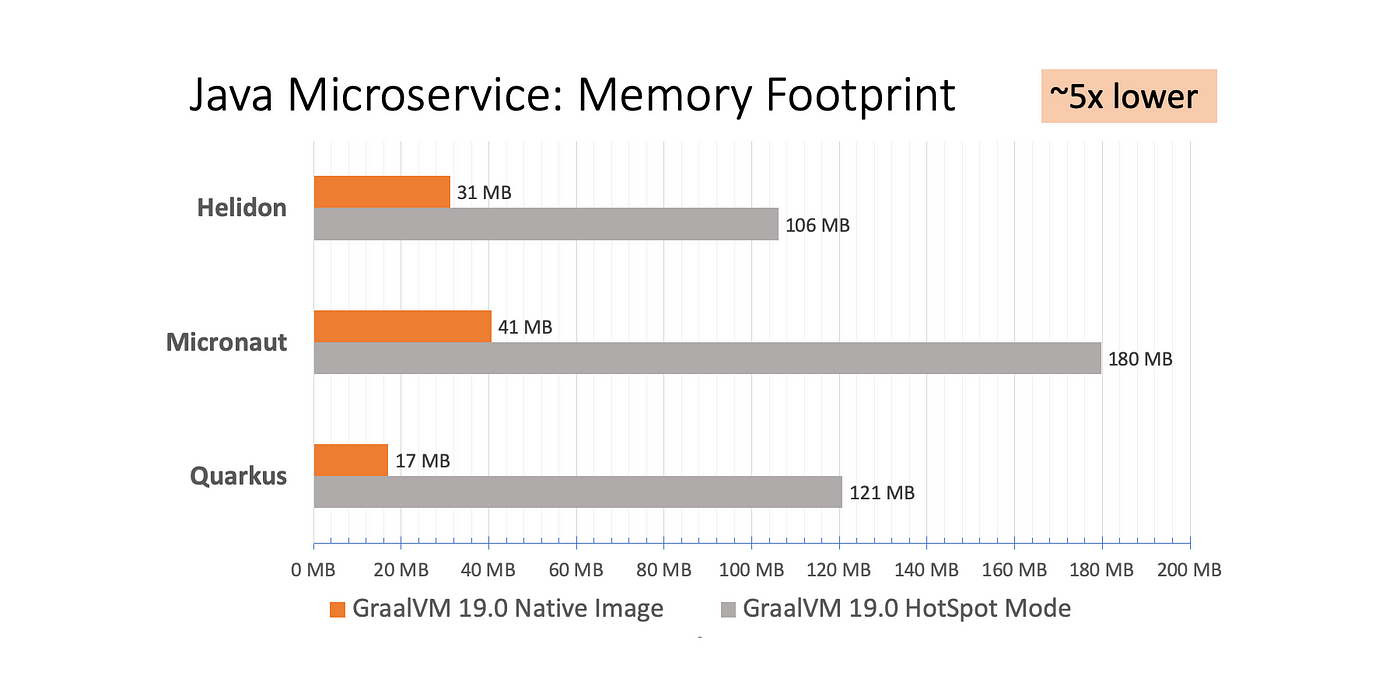Native image with GraalVM
Ahead-of-time compilation, tuned for performance
GraalVM
High-performance JDK distribution designed to accelerate the execution of applications written in Java and other JVM languages while also providing runtimes for other popular languages.
GraalVM = HotSpot JVM
+ Graal JIT compiler
+ ability to run other languages (JS, Python, ...)
+ AOT compiler
+ additional bundled tools
+ ...
GraalVM

AOT: native image
AOT compiled Java code to a standalone native platform executable.
AOT: native image build process

AOT: native image build process
Graal compiles ALL the reachable code into a platform specific native executable that is fully functional on its own and doesn’t need a JVM to run.
AOT: runtime
Who takes care of runtime features like memory management and thread scheduling?
SubstractVM
Slim VM implementation that provides runtime components.
AOT vs JIT: startup

AOT vs JIT: startup
JIT
- load JVM executables
- load classes from the file system
- verify bytecodes
- start interpreting
- run static initializers
- first-tier compilation
- gather profiling feedback
- second tier compilation(C2 or GraalVM)
- finally, run with the best machine code
AOT vs JIT: startup
AOT
- load executable with a prepared heap
- immediately start with the best machine code
AOT vs JIT: startup

https://medium.com/graalvm/lightweight-cloud-native-java-applications-35d56bc45673
AOT vs JIT: memory footprint

https://medium.com/graalvm/lightweight-cloud-native-java-applications-35d56bc45673
Game changer for serverless architecture
Java can stands on the same level as other programming languages in the serverless world!
Demo
converter-worker
AOT vs JIT: trade-offs

AOT vs JIT: trade-offs
AOT: pain points
Met 18 issues when building the converter-worker in native image…
AOT: pain points - builds
- CPU hungry
- memory hungry
- long build
- native build time: ~3m38s
- traditional build time: ~15s

AOT: pain point - no immediate feedback
When developing in local, we are usually working in traditional mode.
AOT: pain point - 3rd party libraries
Not every libraries can support native mode.
AOT: pain point - OkHttp
GraalVM / Quarkus are using an old version of okhttp ⇒ conflict with annotations-client auto-generated SDK.
Implemented an annotations-client using native Java HttpClient
AOT: pain point - logger
Some loggers like slf4j uses static singleton and the classpath to know which log implementation it should use (logback, log4j2, …).
Native build needs to access to ALL reachable codes, so the build fails ⇒ need to add substitutes:
@TargetClass(io.netty.util.internal.logging.InternalLoggerFactory.class)
final class Target_io_netty_util_internal_logging_InternalLoggerFactory {
@Substitute
private static InternalLoggerFactory newDefaultFactory(String name) {
return Slf4JLoggerFactory.INSTANCE;
}
}AOT pain point - new Java features
The release train is as follows:
Java -> framework / libraries -> Graal / native
E.g. Java 17 support only available on May 2022! Java 17 LTS was released on 2022-09-14 ⇒ 8 months!
AOT pain point - reflection
By design, reflection is not supported.
Need to declare all the classes that are instanciated using reflection in a JSON file (including the serde with Jackson):
[
{
"name": "com.bioserenity.converter.domain.model.Job",
"allDeclaredConstructors": true,
"allPublicConstructors" : true,
"allDeclaredMethods" : true,
"allPublicMethods" : true,
"allDeclaredFields" : true,
"allPublicFields" : true
},
{...}
]Use libraries as little as possible!
Resources
- https://www.infoq.com/articles/native-java-graalvm/
- https://www.graalvm.org/22.0/reference-manual/native-image/
- https://medium.com/graalvm/lightweight-cloud-native-java-applications-35d56bc45673
- https://filia-aleks.medium.com/graalvm-aws-lambda-or-solving-java-cold-start-problem-2655eeee98c6
- https://quarkus.io/
- https://github.com/oracle/graal/blob/master/docs/reference-manual/native-image/Limitations.md